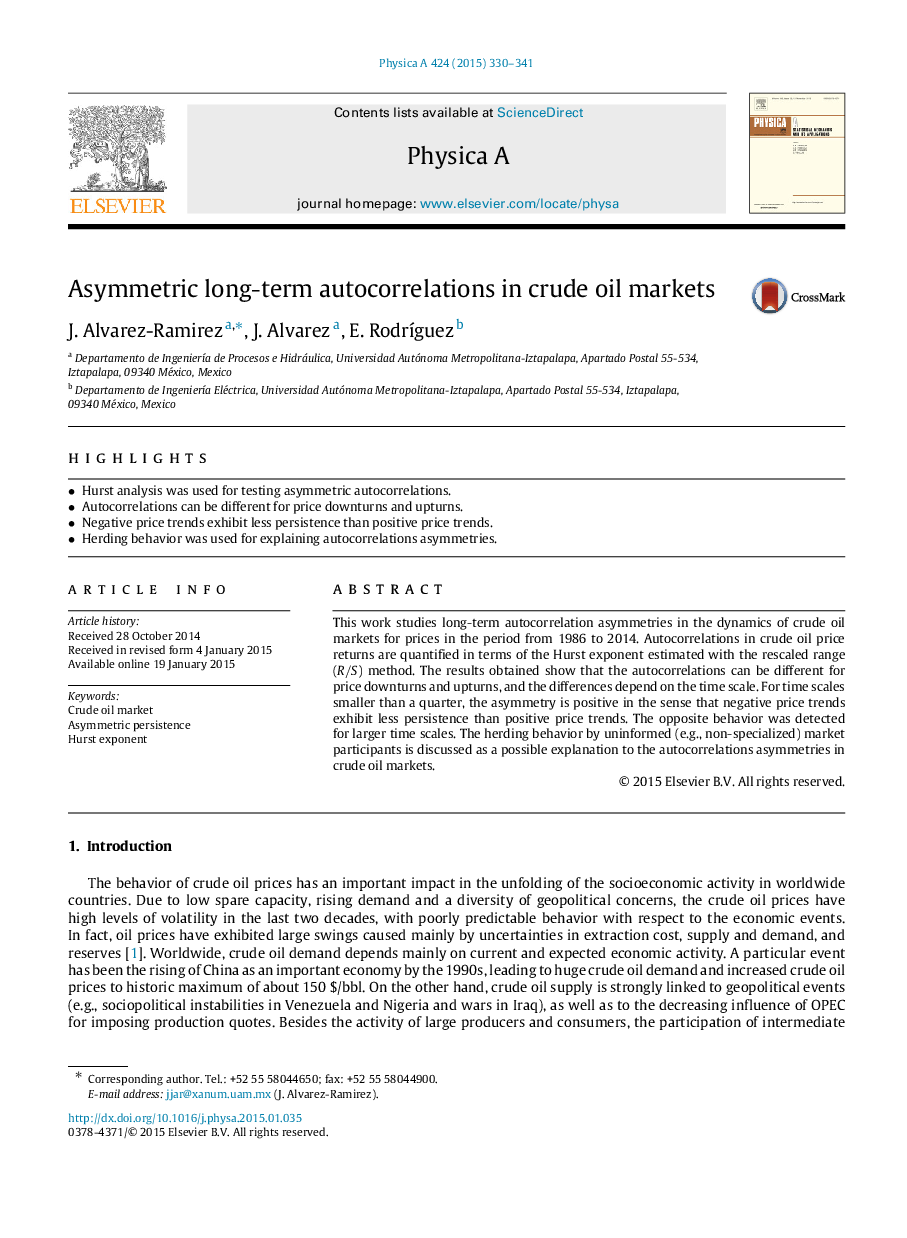| Article ID | Journal | Published Year | Pages | File Type |
|---|---|---|---|---|
| 973837 | Physica A: Statistical Mechanics and its Applications | 2015 | 12 Pages |
•Hurst analysis was used for testing asymmetric autocorrelations.•Autocorrelations can be different for price downturns and upturns.•Negative price trends exhibit less persistence than positive price trends.•Herding behavior was used for explaining autocorrelations asymmetries.
This work studies long-term autocorrelation asymmetries in the dynamics of crude oil markets for prices in the period from 1986 to 2014. Autocorrelations in crude oil price returns are quantified in terms of the Hurst exponent estimated with the rescaled range (R/SR/S) method. The results obtained show that the autocorrelations can be different for price downturns and upturns, and the differences depend on the time scale. For time scales smaller than a quarter, the asymmetry is positive in the sense that negative price trends exhibit less persistence than positive price trends. The opposite behavior was detected for larger time scales. The herding behavior by uninformed (e.g., non-specialized) market participants is discussed as a possible explanation to the autocorrelations asymmetries in crude oil markets.
